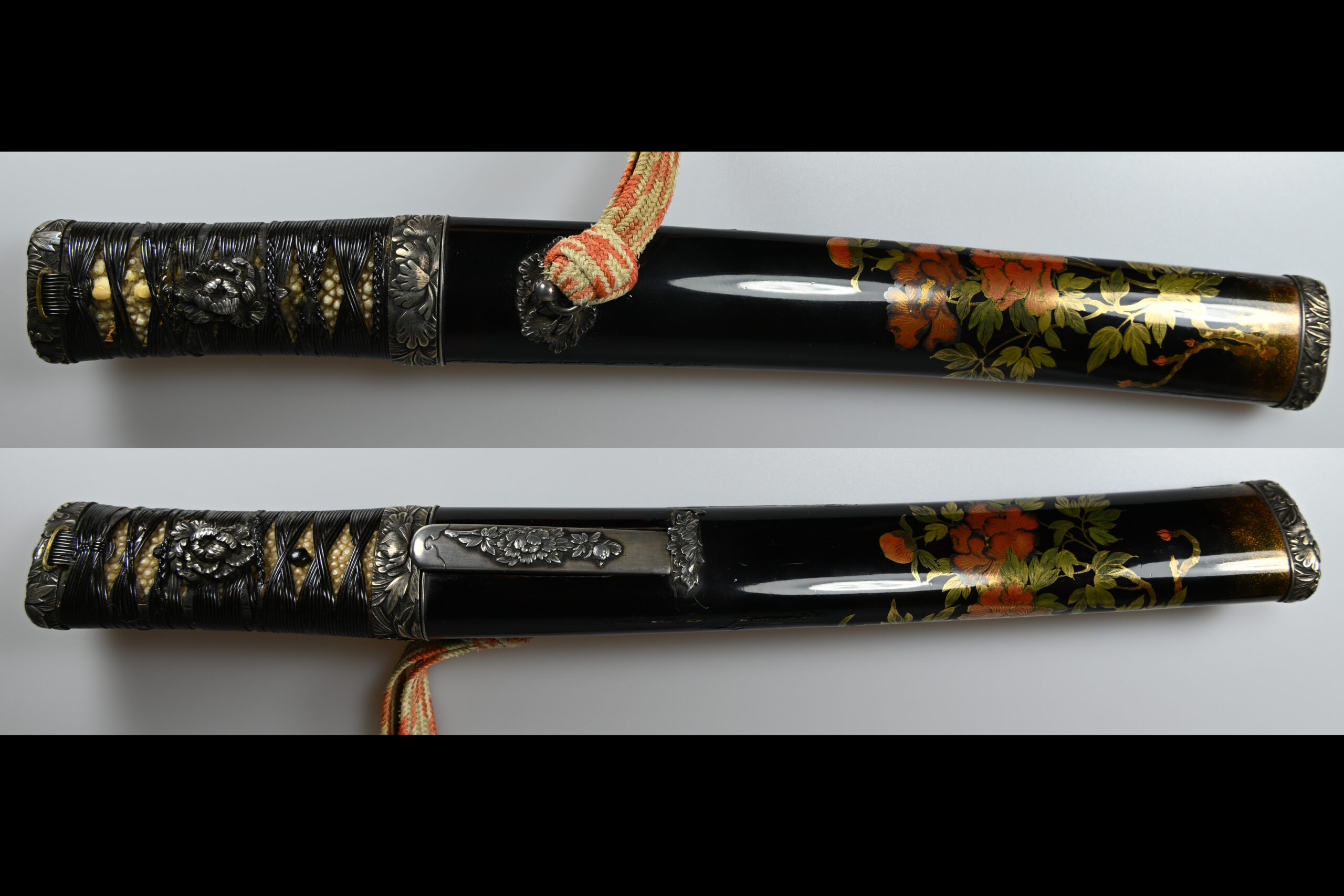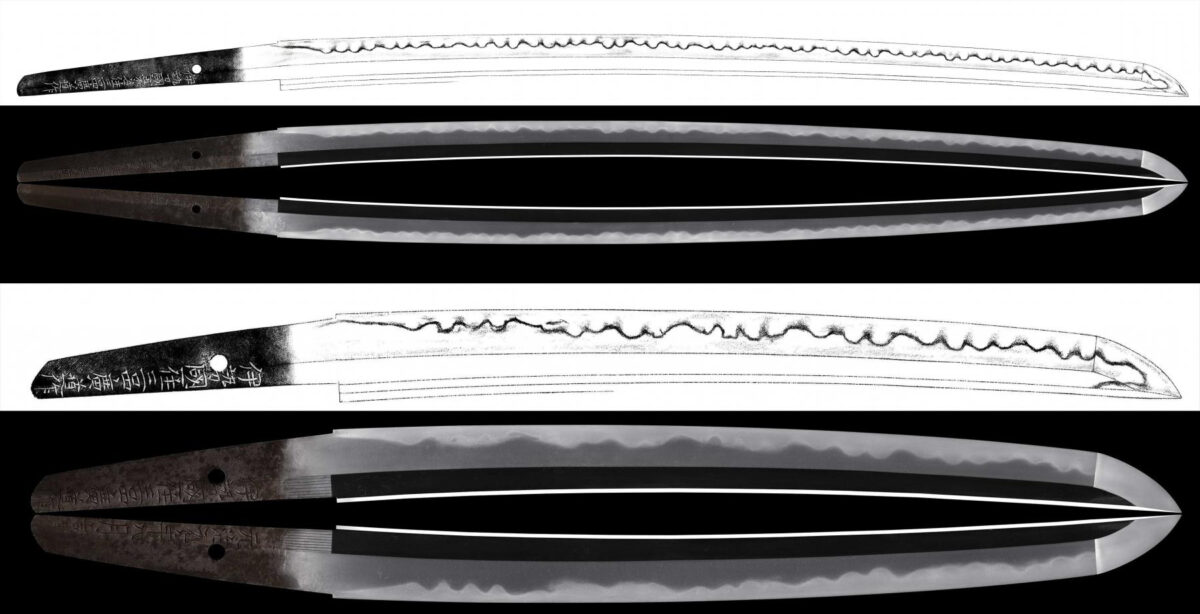
Katana Hizen Tadayoshi (9. Generation) with Koshirae
Signature/mei: Hizen no Kuni Tadayoshi (Goji-Mei)
shinogi-zuruki, iori-mune
ko-itamehada in the style of Hizen e.g. konukahada;
suguha hamon with a deep and bright nioiguchi;
boshi komaru kaeri;
one mekugi ana
Silver foiled double habaki
Polished and in shirasaya with oshigata
Koshirae with scabbard bag made from leather
Dimensions:
Nagasa: 70.0 cm
Sori: 1.21 cm
Motohaba: 3.34 cm
Motokasane: 0.71 cm
Sakihaba: 2.27 cm
Weight: 655 grams
Certificate (Katana): NBTHK Hozon Token (2001)
Certificate (Koshirae): NBTHK Tokubetsu Hozon Tosogu (1999)
Price: €12500 / $13750 / ¥ 2000000
The 9th Generation, was the last generation of the famous school of Hizen Tadayoshi smiths. He went by the name Hyakutaro and lived from 1832 until 1880. He stopped making swords in 1871.
The katana is in shirasaya and accompanied by a beautiful koshirae which comes in it’s original scabbard bag made from leather and which is decorated with mon. What makes this exceptional is that the NBTHK has recorded this on the Tokubetsu Hozon certificate of the koshirae.
Hizen Province Tadayoshi is a distinguished swordsmith who flourished during the later period. This work stands out with its deep nioiguchi and a soft hamon that resembles the texture of torn paper. It exudes a dignified presence and is strongly recommended for acquisition. Additionally, the mounting of this sword has successfully passed the Tokubetsu Hozon examination, featuring a Nanban-style tsuba crafted by Bizen no Ju Naomasa. The well-preserved scabbard bag is also noteworthy. Amid the challenges of preserving pressed molds, this is an exceptional and rare specimen, representing outstanding craftsmanship.
Created during the late Edo Period, this piece is a testament to the innovative craftsmanship of the swordsmiths of that era. Particularly, the work of Hizen Province Tadayoshi, 9th generation, who was the legitimate heir of the 8th generation, demonstrates exceptional technical skill.
I find it remarkable to see a sword from a school that was active for nearly 300 years, spanning nine generations. I couldn’t describe it better than the former president of the Token Society of Great Britain:
Over the years I have often read and indeed written that the quality of works of a particular school diminished in later generations. […] Mainline Hizen work has been incredibly consistent for 9 generations and I think this is clearly demonstrated here with a work of the last of the line. While there was some fluctuation in quality between various generations it remained remarkably consistent and followed the classic Hizen form with only minor reference to the changes in fashion and trends of the time. I have been a Tadayoshi fan for a very long time (as have many others) and I think this sword can help illustrate why they remain so popular.
Paul Bowman – Former president of the The Token Society of Great Britain on the Nihonto Message Board
The large circular iron tsuba with burl grain pattern, showcasing Nanban-style ironwork, is signed Bizen no Ju Naomasa.
The elegant fuchikashira have some gold inlay on a shakudo ground.
In mint condition, the black lacquered saya has a silver-crafted lobster the rear end, while the menuki depicting the sun and moon in gold and silver.


















